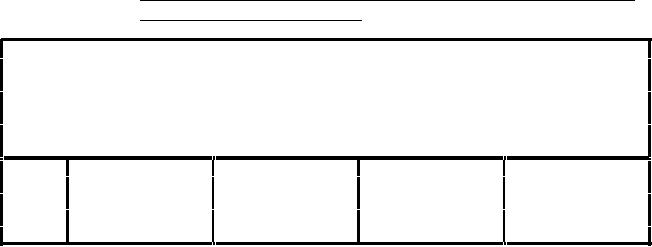
MIL-D-89009
TABLE 54.
Format and example of content for Edge Bounding
Rectangle (EBR) table.
{Header length};\
Edge Bounding Rectangle Table;-;\
ID=I,
1,P,Row Identifier,-,-,:\
XMIN=F,
1,N,Minimum X Coordinate,-,-,:\
YMIN=F,
1,N,Minimum Y Coordinate,-,-,:\
XMAX=F,
1,N,Maximum X Coordinate,-,-,:\
YMAX=F,
1,N,Maximum Y Coordinate,-,-,:;
1
-76.333313
36.999981
-76.331650
36.999981
2
-76.331650
36.999981
-76.331215
36.999981
3
-76.331215
36.999981
-76.322617
36.999981
:
:
:
:
:
n
n
n
n
n
f. Face primitives. In the DCW, faces represent such areal
features as countries and inland water. Faces are areas
enclosed by edges. All faces are defined by the set of
edges composing the face border. All faces are
topologically linked to the appropriate edge and ring
primitives.
g. Face table. Face primitives and their topology are
stored in face primitive tables. Face primitive tables
in the DCW database contain three mandatory columns: a
face row identifier (which is a primary key); a feature
table identifier and a ring pointer column (which is a
foreign key to a ring primitive table); and the face
table (identifies all faces present in a coverage). It
is through the topologic link to a ring table that the
relationship between a face, its associated edges, and
other surrounding faces is made. The format and an
example of the content for a face primitive table are
shown in TABLE 55.
h. Face bounding rectangle. Face primitives require a
bounding rectangle for each record in the primitive
table. The format and an example of the content for an
face primitive bounding rectangle table are shown in
TABLE 56.
51
For Parts Inquires call Parts Hangar, Inc (727) 493-0744
© Copyright 2015 Integrated Publishing, Inc.
A Service Disabled Veteran Owned Small Business